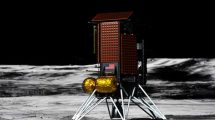
SES S.A. announced that the SES-4 satellite is fully operational and ready for service at the orbital location of 338 degrees East.
SES-4 was successfully launched from the Baikonur Cosmodrome in Kazakhstan on board an ILS Proton Breeze M booster on February 15, 2012. SES-4 replaces the NSS-7 satellite at 338 degrees East longitude and provides replacement as well as incremental capacity at this well-established SES orbital slot over the Atlantic Ocean.
It has C-band beams serving the eastern hemisphere of Europe and Africa and providing full coverage of the Americas, plus a global C-band beam to support mobile and maritime customers.
SES-4 is a 20-kilowatt satellite manufactured on the flight-proven Space Systems/Loral 1300 platform, with 52 C-band and 72 Ku-band transponders. It has C-band beams serving the eastern hemisphere of Europe and Africa and providing full coverage of the Americas, plus a global C-band beam to support mobile and maritime customers. Four high-power, regional Ku-band beams provide service to Europe, the Middle East, and West Africa, as well as North and South America, with extensive channel switching capability between C- and Ku-band transponders for enhanced connectivity. The satellite is designed to deliver services for 15 years or more.
Martin Halliwell, Chief Technology Officer of SES, stated: “We are delighted to see the 50th spacecraft in the global SES fleet go live and congratulate the technical teams involved for the successful bringing into operation of this important addition to our fleet. SES-4 offers state-of-the-art transmission capacity to SES customers across three continents and for a wide array of applications, including video distribution with DTH power-levels, VSAT, government and maritime services.”












Add Comment